Articles
- Page Path
- HOME > Restor Dent Endod > Volume 28(3); 2003 > Article
- Original Article Shear bond strength of self-etching adhesives to dentin and sem analysis
- Young-Gon Cho, Kee-Sun Roh, Soo-Mee Kim, Young-Gon Lee, Jin-Ho Jeong, Young-Jae Ki
-
2003;28(3):-231.
DOI: https://doi.org/10.5395/JKACD.2003.28.3.222
Published online: May 31, 2003
Department of Conservative Dentistry, College of Dentistry, Chosun University, Korea.
- Corresponding author (ygcho@mail.chosun.ac.kr)
Copyright © 2003 Korean Academy of Conservative Dentistry
- 858 Views
- 1 Download
- 1 Crossref
Tables & Figures
REFERENCES
Citations
Citations to this article as recorded by 

- POSITIONING SELF‐ETCHING ADHESIVES: VERSUS OR IN ADDITION TO PHOSPHORIC ACID ETCHING?
Claus‐Peter Ernst
Journal of Esthetic and Restorative Dentistry.2004; 16(1): 57. CrossRef
Shear bond strength of self-etching adhesives to dentin and sem analysis
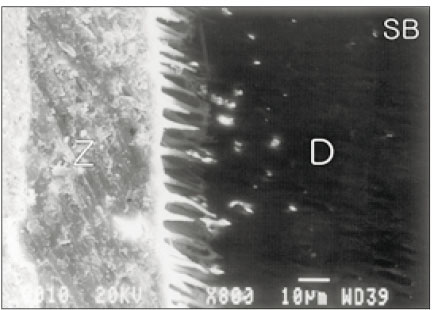
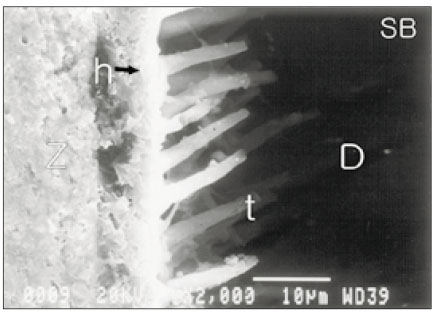
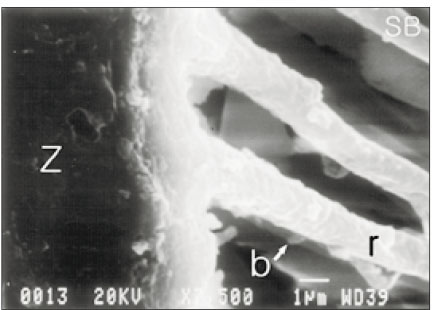
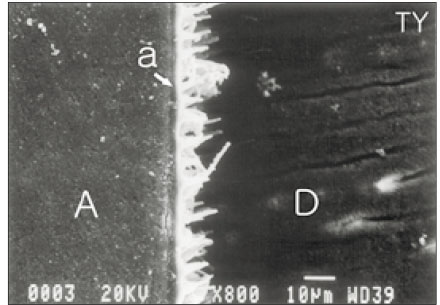
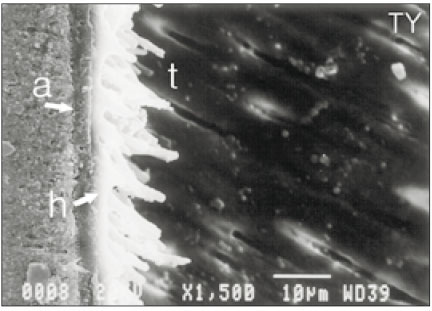
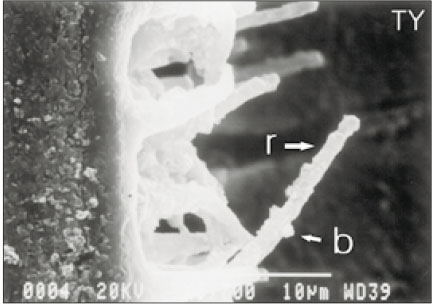
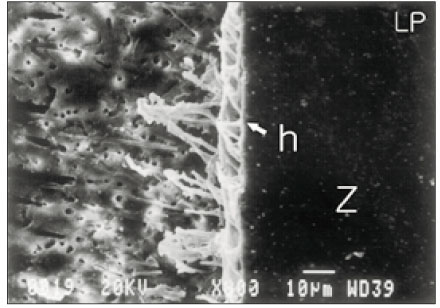
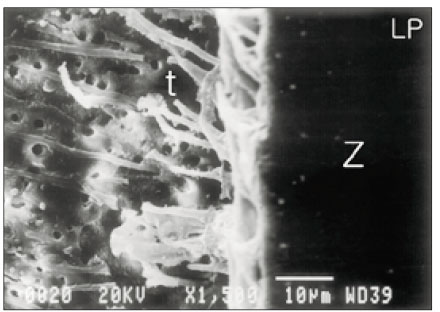
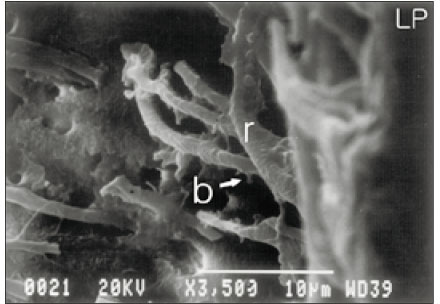
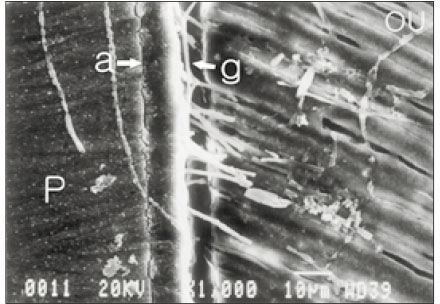
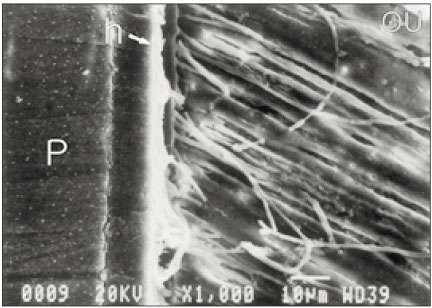
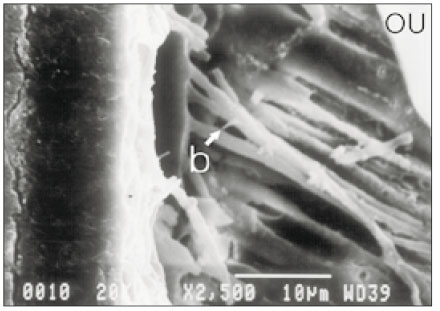
Fig. 1
Dentin (D) and Z 250 (Z) interface showed close adaptation in Single Bond (SB) group. (SEM ×800)
Fig. 2
SB group showing 2-4 µm thick hybrid layer (h) with taper resin tags (t) which were 10 µm long and had regular interval. (SEM ×2,000)
Fig. 3
Higher magnification of SB group showing resin tags with rough surface (r) and short lateral branches (b). (SEM ×7,500)
Fig. 4
Dentin (D) and Aelitefil (A) interface showed close adaptation and 5 µm thick adhesive layer (a) in Tyrian SPE (TY) group. (SEM ×800)
Fig. 5
TY group showing 1.5 µm thick hybrid layer (h) and numerous resin tags (t) which were 5-10 µm long and dense. (SEM ×1,500)
Fig. 6
Higher magnification of TY group showing resin tags with rough surface (r) and short lateral branches (b). (SEM ×3,700)
Fig. 7
Dentin and Z 250 (Z) interface showed close adaptation and 2 µm thick hybrid layer (h) in Prompt L-Pop (LP) group. (SEM ×800)
Fig. 8
LP group showing short and long resin tags (t) which were 5-15 µm long. (SEM ×1,500)
Fig. 9
Higher magnification of LP group showing resin tags with rough surface (r) and short lateral branches (b). (SEM ×3,500)
Fig. 10
Dentin and Palfique Toughwell (P) interface showed gap (g) and 10 µm thick adhesive layer (a) in One-Up Bond F (OU) group. (SEM ×1,000)
Fig. 11
OU group showing 2 µm thick hybrid layer (h) and few resin tags which were short and very long.
Fig. 12
Higher magnification of OU group showing short lateral branches (b). (SEM ×2,500)
Fig. 1
Fig. 2
Fig. 3
Fig. 4
Fig. 5
Fig. 6
Fig. 7
Fig. 8
Fig. 9
Fig. 10
Fig. 11
Fig. 12
Shear bond strength of self-etching adhesives to dentin and sem analysis
Group classification of an one-bottle adhesive and three self-etching adhesives/composite resins used in this study.
Shear bond strength (MPa) to dentin and failure mode after the test
*: there was statistically significant difference among groups by Tukey's test (p<0.05).
Table 1
Group classification of an one-bottle adhesive and three self-etching adhesives/composite resins used in this study.
Table 2
Shear bond strength (MPa) to dentin and failure mode after the test
*: there was statistically significant difference among groups by Tukey's test (p<0.05).

 KACD
KACD














 ePub Link
ePub Link Cite
Cite

